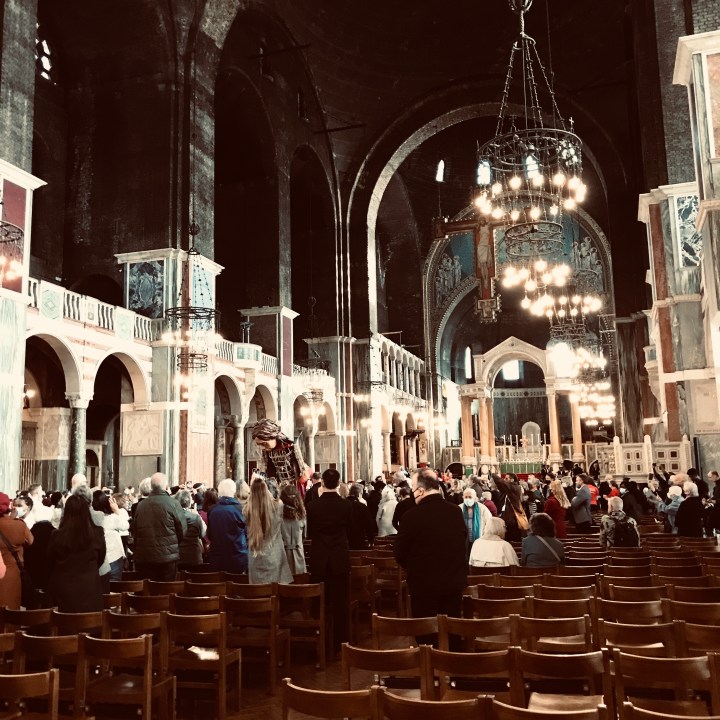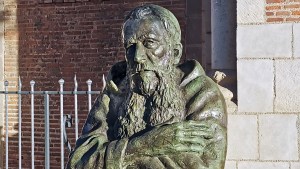One benefit of COVID-19 for U.K. Catholics is the first saintly visitation since 2009. On that occasion around half a million believers turned up to view the relics of St. Thérèse of Lisieux. At the start of September it will be the turn of another young French woman from the 19th century. St. Bernadette of Lourdes holds a special place in the hearts of British Christians. Although Anglicans are unlikely ever to declare her a saint, officially, it’s not just Catholics who revere her.
On the tour of St. Bernadette’s relics throughout the U.K., every Catholic diocese in the country is part of the program. Nor has the Church of England been left out. Liverpool has two cathedrals, and both denominations will be hosting the sacred relics. The Anglican cathedral will welcome the saint’s relics for a few hours and the Catholic venue for a few days.
One out of 50 stops is more encouraging for ecumenism than it sounds. While the Anglicans share many saints from before the Protestant Reformation, there are none from the five centuries that followed. St. Bernadette is special for less-fundamentalist Protestants, such as “high church” Anglicans. This saint is all about the Virgin Mary. Although the Reformation put a stop to the veneration of the Virgin, the people of Britain continued to have a soft spot for her.

Long before Lourdes, Fatima or Medjugorje became sites sacred to Our Lady, there was Walsingham. In 1061 an Anglo-Saxon noblewoman saw the Blessed Virgin Mary near the windswept east coast of England. There were miraculous happenings and pilgrims flooded in for almost five centuries after that, until the Shrine of Our Lady of Walsingham was destroyed by King Henry VIII in 1538.
It wasn’t until exactly a hundred years ago that the Anglican Church revived the practice. Pilgrimages have been going strong ever since, including combined efforts shared by Catholics and Anglicans. Purely Catholic pilgrimages, however, were revived first. This was in 1897 after treatment of the oppressed minority had improved.
Igniting devotion to the Virgin Mary?
Modern Britain is generally far more accommodating to the Virgin Mary, and to the saint who saw her in Lourdes. Unlike St. Thérèse and her mystical communion with Christ, St. Bernadette represents the simple virtues that the English have always cherished. News of Lourdes had spread to England well ahead of St. Bernadette’s death in 1879. Reactions tended to be condescending rather than filled with old-style reforming fury.

One of the rare opinions expressed by an Englishman who had visited the new place of pilgrimage was published in the engagingly titled but now defunct English Household Gazette of 1881. The tone is typical of the era: “It is difficult for a Protestant to appreciate the interest there is to Roman Catholic minds in such a place as the Grotto of Lourdes.” Pilgrims were described as “seeking signs to encourage their feeble hearts.” The writer then heard a full account of the young saint’s life from a well-informed French passenger on the train out of Lourdes. The Englishman with the heart of Sherlock Holmes records staring hard out of the window to avoid revealing the tears that he feared were welling up.

The story of St. Bernadette (or The Song of Bernadette, as written by Franz Werfel and then turned into a 1943 Hollywood movie) still has the power to stir hearts. Can it overcome the sang froid of the British people, through whose veins it is sometimes said that cold porridge runs? Last year the name Bernadette ranked a barely visible number 1,186 among babies born in England and Wales. The saint’s relics might revive interest in her life and work.
Wars, wildfires and politics
As the relic tour is so long and far reaching, these two months could make a huge difference. Much more has been revealed about itinerary than the exact composition of the relics. The second last stop is a “closed visit” to what has been called one of Britain’s 10 worst prisons. The relics will surely do some good there. The final stop is, appropriately given the even worse problems of that country, the Ukrainian Catholic Eparchy.
The only part of the U.K. the relics are not going is Northern Ireland. This is just as well considering that protestors, mostly from that outpost of Britishness, continue to picket Anglican pilgrimages to Walsingham, denouncing them as “popery.”
With all the problems that travelers between the U.K. and France have had lately, let’s hope that the relics have an easier journey. It’s a blessing that pilgrims don’t have to fight their way the short distance to France, especially as it’s the region near Lourdes that has experienced the worst forest fires.



